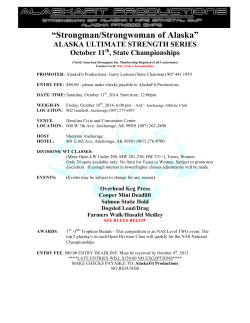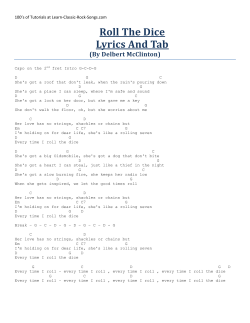
John Deere Netwrap Baling Guide Applying net to the bale
Applying net to the bale • The number of wraps on the bale will depend on the monitor setting and the PTO speed of the baler. If engine speed is slowed down, the amount of net wrap on the bale is reduced. John Deere Netwrap Baling Guide • The number of wraps on the monitor will have to be increased to maintain the same number of wraps on the bale when rated PTO speed is reduced. For example, if engine RPMs are reduced from Rated PTO to 1800 RPM, increase monitor to a 2.4 setting to get two wraps on the bale. Engine RPM Desired No. of wraps Rated PTO 1800 RPM 1500 RPM 1300 RPM Approx. monitor setting needed 2 3 2 3 2 3 2 3 2 3 2.4 3.6 2.9 4.3 3.3 5 For best baling results, it is recommended to follow this general guide for minimum number of full wraps on the bale. To be counted as a full wrap, each wrap should cover the entire width of the bale surface, all the way around the bale. * The adjustments in the chart are not required on any baler equipped with a Slip Clutch Alert / Speed Compensation kit. • The settings on the monitor are approximate. Always check the number of complete wraps on the bale, especially when changing engine RPMs. • If buildup of crop material in the rear gate is causing tears around the bale, reduce engine speed and shift up a gear to increase ground speed. 06/14 Tama Canada Ltd. AMBRACO Toll Free: 1-877-690-4442 www.tamacanada.ca Toll-Free: 1-800-225-8946 www.ambraco.com Straw, Wheat hay, Cereal grains Corn stalks, Sudex, Hay grazer, Milo stalks 2 Wraps 3 Wraps 4 Wraps At least one additional full wrap of net is recommended when used in extreme conditions, such as: Go to YouTube to learn more about “how to make better netwrap bales”. Or scan this QR code Hay, Alfalfa High baler density settings Very short or dry crops Very hot temperature Multiple handling of the bale High UV conditions Long term outside storage ! A combination of several extreme conditions may require a further increase in wraps. * These recommendations are given as a guide. Additional recommendations before and during baling: Always read your Baler’s Operator Manual for specific recommendations regarding the operations of your baler. Review the following subjects in the index of the OM: • Storage < prevent startup problems > • Brake < rubber drive roll wrapping > Review the following subject in the “Trouble Shooting” section: • Net wrap material around the top idler roll. Check that the ends of the cardboard core are free to turn in the net box. Loading the roll into the baler’s storage location • Load the spare roll with the wide green stripe (1A) on the right-hand side, so you do not have to switch direction later when lowering it into the operating position. • To secure the spare roll, stretch the rubber straps (1B) and hook them to the support brackets on both sides. (Fig.1) Fig.1 1B 1A • When the storage location is empty, make sure that the straps (1B) are secured to the support brackets (Fig.2) and not left to hang free! When free, the S-hook (Fig.3) on the end of the straps can snag the net and ruin several hundred feet of the working roll. Fig.2 Check and clean any snagging points in the baler, net pan, belts or bale ramps, which may tear the net. Fig.3 During baling, feed crop into the bale chamber evenly, proceeding from side to side. After bale ejection, ensure bale is clear of tail-gate before closing. Check there is no crop between layers of net on the completed bale. Make sure the gate opening cycle time is set to the recommended 5 seconds (see Operator Manual for details). ! For more information, please contact your local John Deere dealer For optimum performance... Care of Net Wrap Material • Store the net rolls flat. Do not stand rolls on end. • Store in a dry place off the ground (for example on a wooden pallet) to prevent deformation of the cardboard tube and net. • Be careful in handling the net. It can be damaged by rolling around loose in the back of a vehicle or by being dragged along the ground. • Using the baler’s storage location to carry an extra roll can help minimize damage to the roll by improper transport. Loading the net into the operating position • The wide green stripe (1A) goes on the right-hand side of the baler in direction of travel. • Thread the net through the rolls with the brake lever. • Do not thread more than 1 inch of loop between the two rolls or it may cause material to wrap around the rolls. Care of baler rolls • Use only baby powder (sparingly) when dusting the rubber drive roll. • To avoid the possibility of net wrapping around the feed rolls when the baler has been idle overnight, or if the baler has been transported between fields, rotate the rubber roll slightly by unlocking and re-locking the brake lever.
© Copyright 2025





















